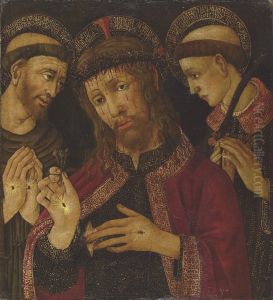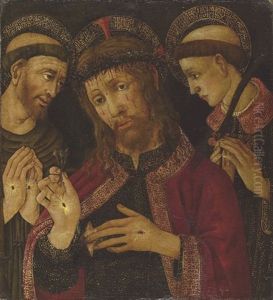Tommaso Di Piero Trombetto Paintings
Tommaso Di Piero Trombetto, an Italian Renaissance artist, was born in 1466 in Florence, Italy. His work is less known compared to the towering figures of his time, such as Leonardo da Vinci or Michelangelo, but he contributed significantly to the art world with his unique style and technique. Trombetto's artistic journey began in the vibrant cultural atmosphere of Florence, a city that was a crucible for the Renaissance movement. Under the influence of the Medici family, Florence became a center for artists, scholars, and thinkers, providing a fertile ground for Trombetto's development as an artist.
Trombetto's early works were primarily religious in nature, reflecting the dominant themes of the era. He was known for his meticulous attention to detail and his ability to convey deep emotional expressions in his subjects. His paintings often depicted scenes from the Bible, saints, and figures from Christian theology, executed with a richness of color and depth that was characteristic of the period. Despite his considerable talent, Trombetto did not achieve the same level of fame as some of his contemporaries. This was partly due to his more reserved and introspective nature, which led him to focus more on his art than on navigating the complex social networks of the Florentine art world.
Throughout his career, Trombetto experimented with various techniques, including fresco and tempera, but he is perhaps best known for his work with oil paint, a medium that was becoming increasingly popular during his lifetime. His exploration of light and shadow, as well as his skillful use of perspective, contributed to the development of the Renaissance style of painting. Trombetto's influence can be seen in the works of later artists, who drew inspiration from his approach to composition and his treatment of religious themes.
Despite his contributions to the Italian Renaissance, Trombetto's works were not widely recognized until after his death in 1534. In recent years, art historians have begun to reevaluate his legacy, recognizing him as an important figure in the development of Renaissance art. Today, Trombetto's paintings can be found in various museums and collections around the world, where they are appreciated for their beauty and historical significance. His life and work serve as a reminder of the depth and diversity of talent that flourished during one of the most vibrant periods in art history.

